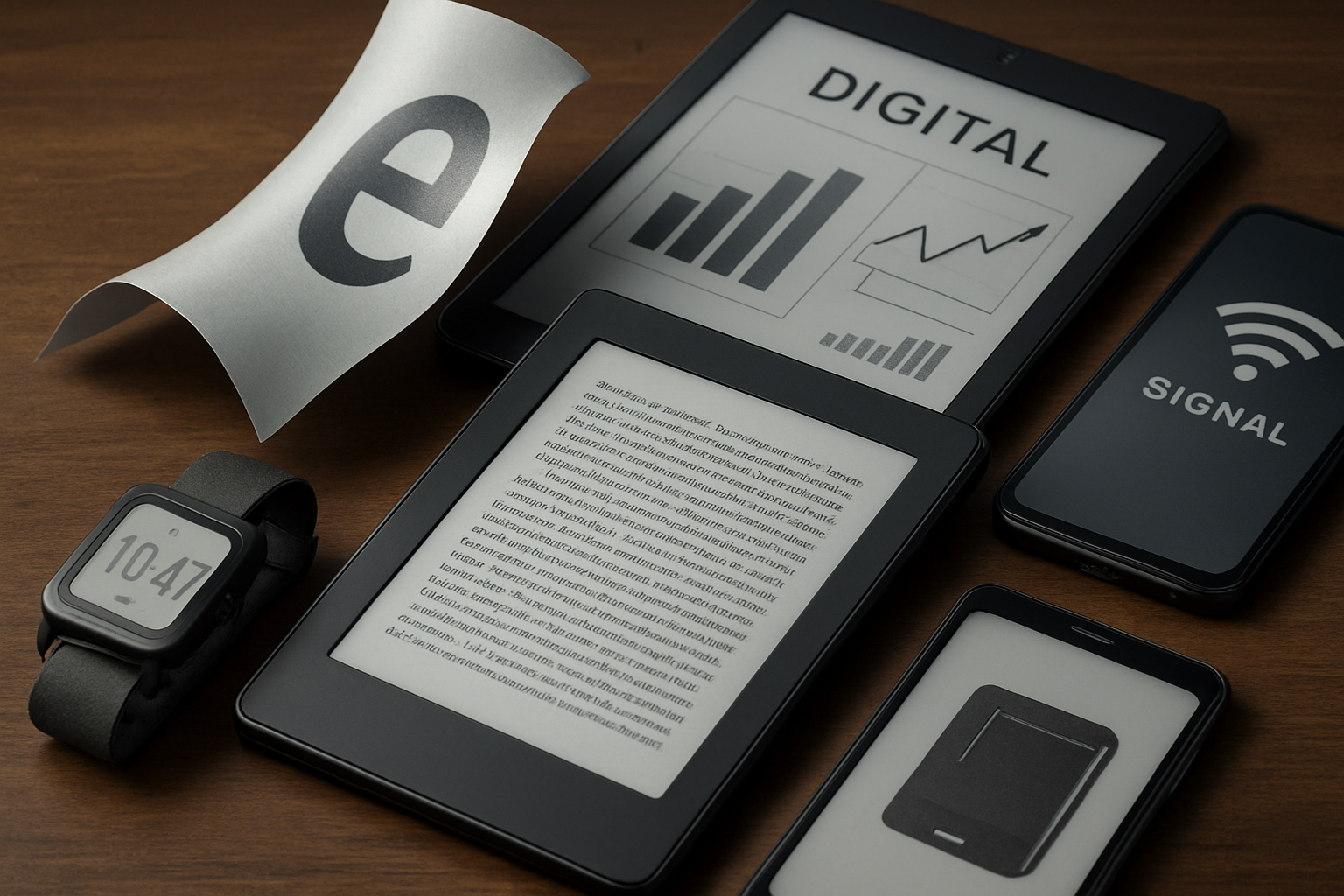"E-ink Tech: Breathing New Life into Paperless Revolution"
**Introduction** Welcome to the digital age, where every piece of information is just a click away. Amidst this dazzling array of technology, E-ink stands out as a revolutionary concept that is redefining our interaction with electronic devices. Let's explore its evolution, current applications, and future potential.

E-ink: A Glimpse into its Conception
E-ink, short for electronic ink, is a type of electronic paper display technology that mimics the appearance of ink on paper. Conceived by Joseph Jacobson at MIT Media Lab in the late 90s, the technology was aimed at creating a paper-like reading experience on a digital platform. The vision was to combine the convenience of digital information with the comfort and familiarity of traditional print.
Journey of E-ink: From Dream to Reality
Over the years, E-ink has evolved significantly. It started as a mere concept in the labs of MIT, and today it powers some of the most popular e-readers such as Amazon’s Kindle. The technology’s major breakthrough came in 2004 when Sony released the world’s first E-ink-based e-reader, the LIBRIé.
The Modern E-ink: More than Just e-Readers
While e-readers remain the most popular application of E-ink, the technology’s versatility has opened doors to a multitude of uses. Today, E-ink can be found in a wide range of products, from smartwatches to electronic shelf labels in supermarkets. Its low power consumption and visibility in direct sunlight make it an appealing choice for outdoor signage.
The Future of E-ink: Endless Possibilities
The future looks bright for E-ink. With advancements in flexible E-ink displays, we may soon witness a new generation of foldable smartphones and tablets. Moreover, E-ink based smart home devices are on the rise, offering a more energy-efficient alternative to traditional LCD or LED displays.
The Market Impact of E-ink
With the growing trend towards digitalization and eco-friendly technologies, the demand for E-ink products is on the rise. The global E-ink display market was valued at $699.4 million in 2019 and is estimated to reach $1,506.6 million by 2027, according to a report by Allied Market Research.
In conclusion, E-ink is not just a technology; it’s a revolution that’s making digital interaction more user-friendly and sustainable. As we move deeper into the digital age, it’s safe to say that the story of E-ink is just beginning to unfold.





